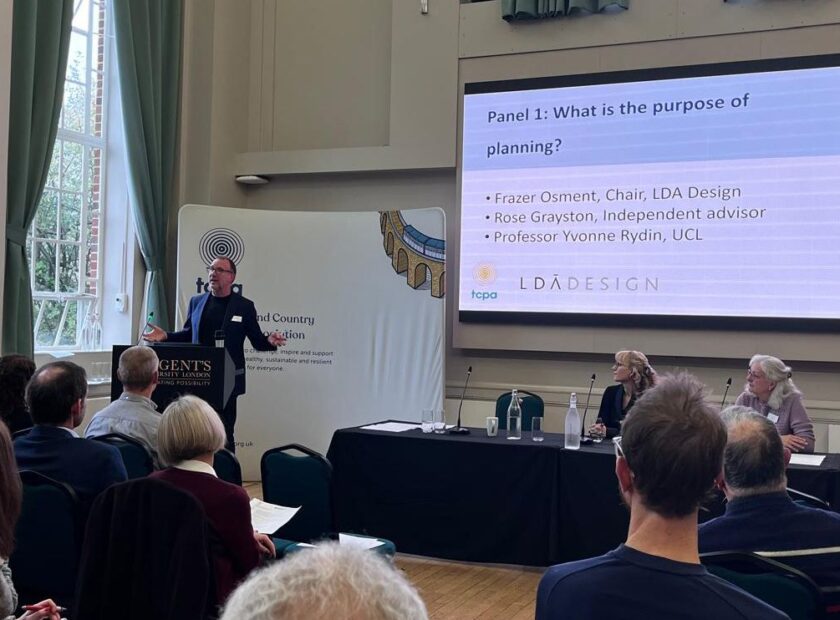On Sunday 28 September the Government published its initial response to the work of the New Towns Taskforce. The Final Report from the Taskforce was published on the same day.
The Taskforce’s report contains a detailed set of recommendations for the Government on planning and delivery for new communities of 10,000 homes and above, including the identification of twelve potential sites for new towns. The sites were identified based on existing knowledge, and through a call for evidence and set against evaluation criteria. These include including prioritising locations which meet the Government’s two essential criteria of ‘supporting or unlocking economic growth’ and ‘addressing present or anticipated strong housing demand relative to supply’.
The Government has welcomed the twelve sites and identified three which it considers have the most potential to meet their objectives of ‘unlocking economic growth and accelerating housing delivery’. However, no final decisions will be made until a Strategic Environmental Assessment, which is due to conclude in Spring 2026, is undertaken of the programme. Accompanying this the Government has, broadly, outlined a set of processes to explore the majority of recommendations made in the report.
For the TCPA, there is much to commend in the Taskforce’s report. On the delivery of new towns, it seems key lessons have been learnt, particularly in relation to stewardship, development corporations, healthy placemaking, skills and capacity, finance and land value capture and compensation. There is recognition of the need for the right development model and commitment from national government to make this a reality. But there are also areas we believe should be stronger – for example standards on social housing provision, ensuring zero carbon, flood resilient and energy positive places, along with an ambition to support a foundational economy as set out in our vision for healthy new towns.
The standards mentioned in the report, of 40% affordable housing and 20% for social rent must be a considered as a minimum, and we would expect this proportion to increase to meet government’s vision for new towns for ‘everyone’. The New Town Development Corporation model provides the opportunity to be more ambitious on social housing provision by providing a different economic model for delivery.
Transparency on the processes of site section (to date and going forward) in the absence of a national spatial approach to need, location and climate resilience would be helpful to build public trust in the process and ensure sustainable outcomes. The processes of SEA and EIA provide crucial tests for the sites identified.
The Government has set out strong words on capturing the ambition of the 1946 New Town’s programme. Commitments made on Sunday (see below) fall short of the scale, financial and political commitment made at the outset of that post-war moment, but the door has been left open for that to be addressed. By setting out a considered process for assessing sites and exploring recommendations made by the Taskforce, there is an opportunity for this programme to have positive outcomes and enable delivery of exemplar new communities.
The tests, of course, will be on implementation. The Government’s response is notably quiet on the need for ‘A sustained commitment to building consensus and public participation in both the designation and management of new communities’, one of the preconditions for success outlined in TCPA’s vision for healthy new towns. Local responses to the sites identified are just emerging and the way these views are managed will be crucial for the future of the programme. If high standards for placemaking and delivery are not identified and secured at an early stage and at the national level, there is little hope that the ambitions set out in these documents will be upheld. On finance, the language says funding will appear but, as with other commitments made, for now, we will have to trust the process.
The TCPA is pleased to welcome the Taskforce’s report and process outlined by the Government and we look forward to working with teams across government to enable sustainable outcomes. We encourage Ministers to truly capture that post-war ambition for change and seize the opportunity to create a legacy of new towns fit for the future.
Key commitments in the Government’s response to the New Towns Taskforce Report:
- A new generation of new towns that must be ‘well-connected, well-designed, sustainable, healthy and attractive places where people want to live and have all the infrastructure, amenities and services necessary to sustain thriving communities established from the outset’
- Further examination of the sites, including a SEA which will report in Spring 2026, and further work with local partners to understand scale and opportunity
- ‘Spades in the ground’ for at least 3 new towns before the end of this Parliament
- Delivery – A preference for development corporations but testing a range of models for delivery at each site
- Placemaking – Selection of placemaking principles subject to environmental assessment and consultation, with a commitment to ‘new towns being places for everyone to live’, [with] a range of housing types available, including genuinely affordable homes. – 40% affordable homes and 20% social rent’ and consideration of how to set these at a national level
- Funding – finance for new towns from existing housing programmes, grant funding from the national housing bank and a requirement for future funding streams to consider the new towns, with ‘a working group bringing local leaders together with the Treasury is exploring how to unlock potential levers.’
- Planning – Spatial planning frameworks to be established for each new town location following environmental assessments and relevant consultations
- Consideration of how best to support the development of new towns in planning policy through forthcoming revisions to the National Planning Policy Framework
- Further information to be published in Spring 2026 on how new towns relate to housing need assessments and ‘ensuring the planning system is fit for purpose for new town delivery’
- ‘Effective and fast’ cross-government collaboration and support. Government will support selected new towns to deliver by providing a single front door to government and support to set up delivery vehicles as well as the provision of robust national planning policy. Homes England and MHCLG’s New Towns Unit will work together as a new development partnership to support the sites
- Land assembly – New town development corporations will be resourced to progress acquisitions via CPOs – ‘where they are needed – as quickly, efficiently and fairly as possible. The ‘no-scheme principle’ of compensation for compulsory purchase will apply, so compensation will not include any land value generated by the new town scheme. There is an expectation that powers in the Levelling-up and Regeneration Act 2023 to acquire land for new towns development by compulsory purchase with a direction removing ‘hope value’ compensation will be used
- The government will set out further detail on viability and land value considerations for new towns, to ‘help to ensure that landowners receive a fair return while also minimising the development costs that are borne by the new town delivery vehicle to deliver high placemaking standards.’
- Establishment of an advisory group, to provide expert advice on delivery, placemaking, quality and design
- A more detailed response to the report in Spring 2026
Katy Lock, Director of Communities and FJ Osborn, TCPA



